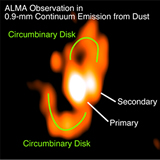 |
ALMA Observation of Gas Spirals as a Nursery of Binary Stars
0.9-mm dust-continuum image of the protostellar binary L1551 NE observed with ALMA (left), and that predicted from our supercomputer numerical simulation (right). Green curves in the left panel traces the
...(more)
|
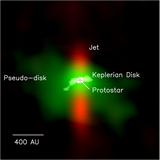 |
ALMA Revealing the Pseudo-disk, Keplerian Rotating disk, and Jet in the Very Young Protostellar System HH 212
Figure 1: ALMA composite image of HH 212, showing a pseudo-disk (green) and a Keplerian disk (bright green) in dust continuum, and a bipolar jet in HCO+ gas (red). (Lee
...(more)
|
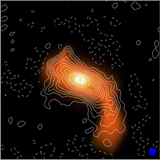 |
Infalling Flow toward a Keplerian Disk around the Protostar L1489 IRS
(a) Schematic figure of our kinematic model. Red and blue arrows denote the directions of the outflow from the protostar. This protostar is surrounded by a Keplerian disk, and there
...(more)
|
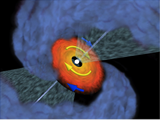 |
Youngest Protoplanetary Disk Discovered with ALMA
ALMA observations by a team of astronomers led by Nadia Murillo and Shih-Ping Lai have found the youngest disk around a protostar to date,
at an earlier stage than predicted
...(more)
|
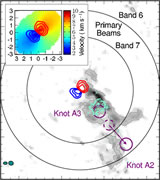 |
ALMA detection of the rotating molecular disk wind from the young star HD 163296
Blue shifted disk wind from HD 163296.
The grey-scale shows the CO J=2-1 integrated intensity of the blue shifted wind from HD 163296. The 4σ level is indicated by the
...(more)
|
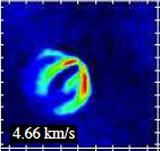 |
Unveiling the gas and dust disk structure in HD163296 using ALMA observations
The CO J=3-2 channel map unveils for the first time at sub-millimeter frequencies the vertical structure details of a protoplanetary disks, showing the back and front side of the flared
...(more)
|
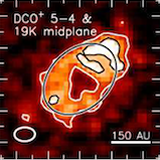 |
ALMA imaging of the CO snowline of the HD163296 disk with DCO+
Integrated emission map of H13CO+ (4-3) with contours showing 3, 5 and 7 sigma (left), and DCO+ (5-4) with contours showing 3 and 5 sigma. The H13CO+ is centrally peaked
...(more)
|
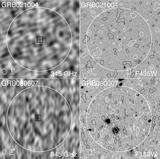 |
The first ALMA-Taiwan result published with Cycle 0 data
The first ALMA-Taiwan result published with Cycle 0 data. Gamma-ray burst host galaxies are observed at 345 GHz with ALMA (left panels) and compared to Hubble Space Telescope images (right).
...(more)
|
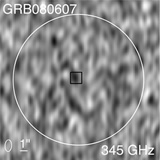 |
ALMA Detection of the Host Galaxy of gamma-Ray Burst GRB 080607
GRB 080607 is a gamma-ray burst from the distant universe of 12 billion light year away (z = 3.036). It is also a dark burst, whose optical light is strongly
...(more)
|
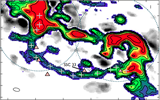 |
Giant molecular clouds and star formation in the tidal molecular arm of NGC 4039
CO(2-1) integrated intensity map of the newly discovered molecular arm close to NGC4039 (Espada et al. 2012 ApJ, 760L, 25E). The plus signs indicate the clumps.
...(more)
|